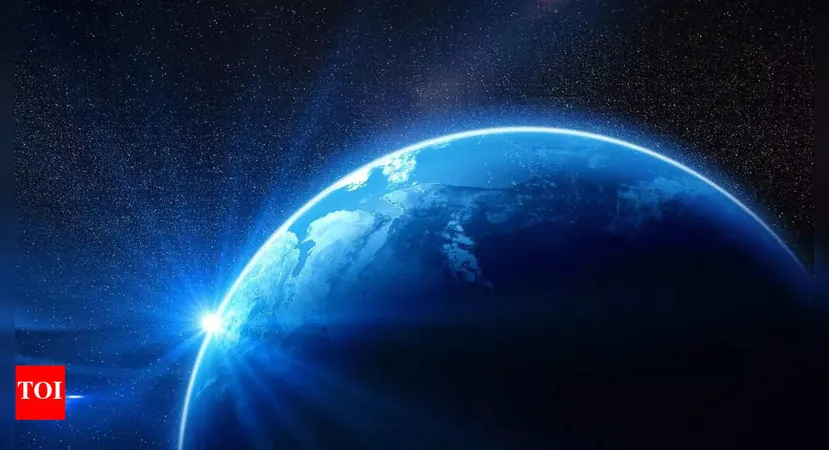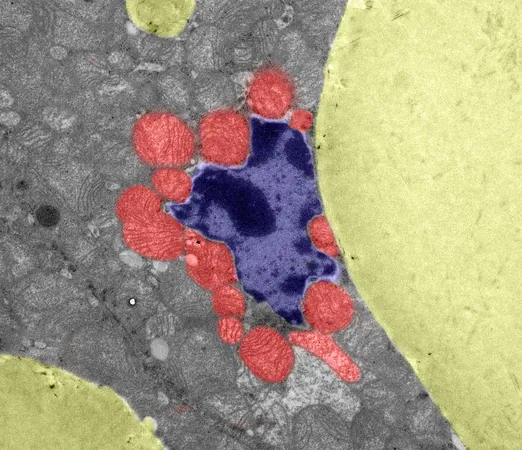
Astounding Discovery: 'Second Earth' TOI-1846 b Unveils Secrets of Alien Worlds!
2025-07-07
Author: Siti
Astronomers Uncover New Super-Earth—TOI-1846 b!
In a stunning breakthrough, scientists have unveiled TOI-1846 b, a colossal super-Earth that is nearly twice the size of our planet, thrilling astronomers and space enthusiasts alike! This remarkable exoplanet, located an astonishing 154 light-years away, orbits a cool red dwarf star and hints at a potentially water-bearing composition, despite being too hot for life as we know it.
Meet TOI-1846 b: A Glimpse into Earth-like Secrets
TOI-1846 b dazzles with its incredible features, boasting a radius approximately 1.8 times that of Earth and a mass more than four times greater. It completes its orbit around its star in just 3.93 days, indicating a swift and dangerously close proximity to its host—a factor that contributes to its scorching surface conditions. With its equilibrium temperature estimated at a blistering 568.1 Kelvin (about 295°C), the chances for surface life are slim to none, but its water-rich potential offers a tantalizing mystery for researchers.
Advanced Techniques Confirm the Exoplanet's Existence
The confirmation of TOI-1846 b was no small feat! Astronomers utilized: - Data from NASA's Transiting Exoplanet Survey Satellite (TESS) to capture its transits. - Ground-based multicolor photometry to refine its characteristics. - High-resolution imaging and spectroscopy to assert that this was indeed a planetary body and not a misleading signal.
Challenging Atmospheric Studies Await!
Despite its fascinating traits, TOI-1846 b presents challenges for atmospheric study, scoring a Transmission Spectroscopy Metric (TSM) of 47—falling short of the ideal score of 90. This limits the use of current instruments for atmospheric analysis. However, the planet remains a prime candidate for future exploration, especially with innovative techniques that might reveal its internal structure and water content.
Comparison with Other Super-Earths: A Look at Habitability
TOI-1846 b is just one of the many burgeoning super-Earths shaking up our understanding of the universe. A notable counterpart is HD 20794 d, which, located only 20 light-years away, lies within its star’s habitable zone despite having a mass close to six times that of Earth. Unlike TOI-1846 b, HD 20794 d holds potential for stable surface water!
What This Discovery Means for the Study of Exoplanets
Although TOI-1846 b is not a candidate for life, its possible water-rich interior, coupled with its proximity to Earth and forthcoming observational data, makes it a pivotal object for future study. As telescope technology leaps forward, particularly with advancements like the James Webb Space Telescope (JWST), TOI-1846 b could significantly influence our understanding of planetary formation and the conditions that govern water retention in alien worlds.
The Star Behind TOI-1846 b: A Cosmic Giant!
The fascinating star that TOI-1846 b circles is a red dwarf, a celestial body much smaller than our Sun, possessing only 42% of its mass and aged about 7.2 billion years. With a cool effective temperature of 3,568 K, this star’s stability and longevity make it a prime candidate for ongoing exoplanet research!



 Brasil (PT)
Brasil (PT)
 Canada (EN)
Canada (EN)
 Chile (ES)
Chile (ES)
 Česko (CS)
Česko (CS)
 대한민국 (KO)
대한민국 (KO)
 España (ES)
España (ES)
 France (FR)
France (FR)
 Hong Kong (EN)
Hong Kong (EN)
 Italia (IT)
Italia (IT)
 日本 (JA)
日本 (JA)
 Magyarország (HU)
Magyarország (HU)
 Norge (NO)
Norge (NO)
 Polska (PL)
Polska (PL)
 Schweiz (DE)
Schweiz (DE)
 Singapore (EN)
Singapore (EN)
 Sverige (SV)
Sverige (SV)
 Suomi (FI)
Suomi (FI)
 Türkiye (TR)
Türkiye (TR)
 الإمارات العربية المتحدة (AR)
الإمارات العربية المتحدة (AR)